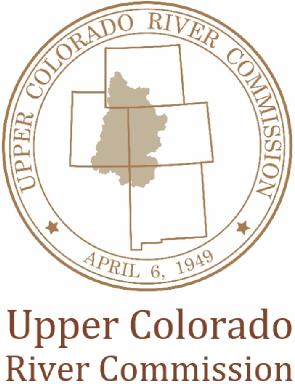The 1922 Colorado River Compact requires the Upper Division States of Colorado, New Mexico, Utah, and Wyoming to not deplete the flow of the river below 75,000,000 acre-feet over ten years to the Lower Division States. The Upper Division States have never violated the compact, and the purpose of any Demand Management program would be to maintain compliance with the compact.
Demand Management Program could be used to protect Upper Basin’s water users by helping to meet the Upper Division States’ Colorado River Compact requirement and avoid or mitigate the impacts of a mandatory Colorado River Compact administration scenario. If such a program is established, it could provide compensation for water users to voluntarily conserve water on a temporary basis.
The purpose of such a program would be to protect water users from mandatory curtailment in the event of a compact administration scenario by conserving and storing water as an insurance policy of sorts, to help ensure continued compact compliance in the future.
In 2019, the seven Colorado River Basin States finalized the Drought Contingency Plan (DCP), a suite of agreements designed to provide more security to the Colorado River System. The Demand Management Storage Agreement was part of the DCP, through which the Upper Division States committed to considering the feasibility of a potential Demand Management program.
At this time, there is no Demand Management program in any Upper Division State. Rather, the feasibility investigation into a potential Demand Management program is underway. The decision whether to set up a Demand Management program will depend on the results of the feasibility investigation. The decision will be made by the Upper Colorado River Commissioners once they have adequate information. Setting up a program will require significant effort on the part of the Upper Division States.
Demand Management is only one potential tool in the toolkit when it comes to maintaining compact compliance and protecting Upper Basin’s water users. It is important to consider all potential mechanisms to increase water security as water users consider the changing climate and uncertainty relating to future hydrologic conditions. Demand Management is one mechanism that each of the Upper Division States (Colorado, New Mexico, Utah, and Wyoming) agreed to investigate.
Demand Management would be a temporary, voluntary, and compensated program that would allow Colorado River water users in the Upper Division States to opt-in and receive compensation to temporarily reduce their consumptive use of water. The water conserved through a Demand Management program would be stored in the Upper Basin and available to assist with meeting the Upper Division States’ future Colorado River Compact requirements.
Yes. To move forward with a Demand Management program as contemplated in the Demand Management Storage Agreement (DMSA) within the Drought Contingency Plan (DCP), key elements of the program would need to be approved by each one of the Upper Division States, the Upper Colorado River Commission (UCRC), and the Secretary of Interior (SOI) prior to its implementation. The Lower Division States would also need to be consulted. Below is a visual representation of the steps that must be taken before a potential program may be established.
At this time, there are no specific Demand Management pilot programs.
The size of a Demand Management program would be determined by the number of water users who voluntarily decide they want to participate, subject to the cap of 500,000 acre-feet of storage among the Upper Division States, pursuant to the Demand Management Storage Agreement.
No. Pursuant to the Drought Contingency Plan and the Demand Management Storage Agreement, all of the water conserved through a Demand Management program must be used to meet the Upper Division States’ requirements under the 1922 Colorado River Compact. Learn more about the Colorado River Compact and “Law of the River.”
The purpose of a potential Demand Management program is to protect water users in Upper Division States by assisting in maintaining compact compliance for the Upper Division States. It is not to provide surplus water to the Lower Division States. A potential Demand Management program would help the Upper Division States continue to meet their legal obligations and mitigate, prevent, or delay mandatory cutbacks or compact administration in the Upper Division States. It would only be implemented if it is determined to be achievable and worthwhile for each of the Upper Division States.
Demand Management is only one potential tool in the toolkit when it comes to maintaining compact compliance and protecting Upper Basin’s water users. It is important to consider all potential mechanisms to increase water security as water users consider the changing climate and uncertainty relating to future hydrologic conditions. Demand Management is one mechanism that each of the Upper Basin States (Colorado, New Mexico, Utah, and Wyoming) agreed to investigate.
The UCRC (through the Drought Contingency Plan signed in 2019) along with the four Upper Division States, has the authority to determine the feasibility of a Demand Management program.
One aspect of the feasibility study is to uncover and address potential unintended consequences. If a program is established, many factors will need to be addressed in its design to adequately protect existing water users and communities in the Upper Division States.
